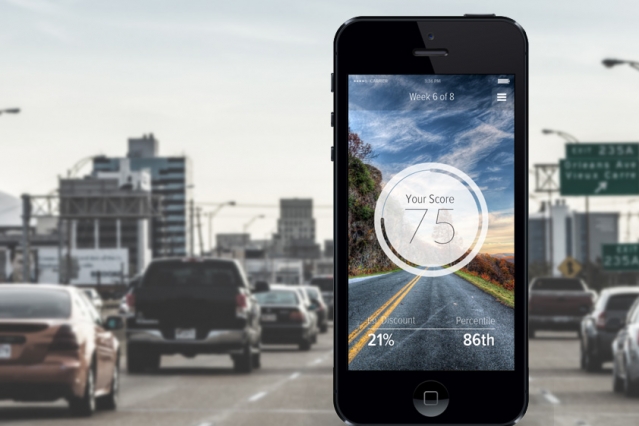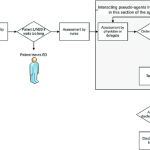Top 3 Innovations to Improve Your Driver’s Behavior on the Road
Nowadays, reducing costs relating to safety issues is one of the top-priority tasks that fleet managers are assigned with. Handling of accidents entails lots of unexpected and unplanned expenses that may cost a company thousands of dollars annually. In a bid to smooth the procedure, people have gone a long way from filling endless papers in manually to developing innovative solutions, like those designed by OCSICO, to automate the process. Nowadays, a lot of effort is being put in the development of cutting-edge technologies, such as crash avoidance systems, in order to reduce the number of accidents from a vehicle part, and eliminate the human factor that contributes a lot to the accident statistics.
However, autonomous vehicles will not yet be available to end consumers in the next 10-20 years. That means such factor as driver behavior should not be neglected when fleet safety strategy is being developed.
The advent of telematics has brought revolutionary changes to the sphere of fleet management. Its positive impact in terms of decreasing fuel and vehicle maintenance costs, reducing idling time, contributing to customer satisfaction and improving overall behavior of a vehicle operator cannot be underestimated.
Most existing solutions suggest using telematics data to control fuel consumption prevent unnecessary stops, optimize routes, etc. They also have a significant psychological impact though attributed to the Hawthorne effect: drivers tend to improve their behavior if they know someone is watching them.
However, nowadays, the focus has been shifting from controlling and correcting to early identifying and preventing. It is obvious now that telematics is not a mere GPS tracking, as it may sometimes seem.
The most promising trends of the last few years tend to combine telematics with other technological and scientific developments. As a result, multifaceted approaches towards improving driver behavior appear on the market. Below are the three of them.
TELEMATICS + BEHAVIORAL SAFETY THEORY
Comprehensive driver risk assessment, which has become possible with the advancement of telematics, uses various performance data to identify a driver’s rick status. The latter may change both to the better and to the worse depending on a driver’s actual performance. In case the risk status worsens, all concerned parties (e.g. fleet managers, HR department, senior executives) are notified. Drivers, in turn, undergo a remedial training, or are encouraged to improve their performance in any other way.
Though this approach is helpful in terms of breaking bad driving habits, it does not analyze the real reasons underlying sudden fluctuations in driver behavior. Usually, the latter could hardly be avoided only by training, and require a more complex remedy.
The issue of combining telematics and behavioral safety theory was discussed at the Fleet Safety Conference held on July 18-20, 2016 in Chicago. IL. The Liberty Mutual Research Institute for Safety presented its latest development, Managing Vital Driver Performance (MVDP), which brings together telematics and root cause analysis.
The approach does not imply responding to the individual cases of careless or aggressive driving. It rather focuses on identifying the reasons lying at the core of driver behavior changes, and subsequent responding to them. The approach involves analysis of both internal and external factors that may influence driver performance. Moreover, it sets driving standards that vehicle operators should stick to.
One of the most important features of MVPD is that it values safety over any other performance indicators, including volume. In this respect, introducing MVDP may involve changing priorities, or even establishing the new ones, as well as ensuring they go hand in hand with the company’s business interests.
GAMIFICATION
One more innovative approach towards improving driver behavior involves application of gamification principles. Gamification is what makes telematics be about fun, not about control. It enables managers to transform the goals a company wants to achieve (for example, to reduce speeding for 35%) into the personal goals of drivers within a game that lasts for a certain period of time, and encourage a kind of a competition between drivers, with the winner getting a reward in the end.
For instance, Telogis Coach, a mobile application designed by the same-name company, uses telematics data on traffic rules violations committed by drivers to deduct the points from their overall score. A typical game lasts for up to three months. When it is over, winners grab their rewards, and losers receive training.
Such an approach will undoubtedly bear fruit for it is entertaining, and plays on a people’s intrinsic desire to always be the first, thus making drivers intuitively follow the rules. The most challenging task here is to keep drivers engaged throughout the game to prevent those lagging behind from quitting. Moreover, no one can tell how long the effect will last when the game is over, so proper training should follow.
PREDICTIVE ANALYTICS
Imagine you are a fleet manager who has found out most accidents drivers get into are preventable. What would you do next? Would you grasp at the opportunity to act proactively in terms of careless driving? If yes, than predictive analytics is what you need.
Predictive analytics models in terms of accident prevention represent a combination of Big Data, telematics and safety training programs. They rely on a scientifically proven correlation between getting into an accident, and a higher possibility to experience it again in the near future.
Unlike the common driver risk assessment systems, predictive analytics models take into account huge amount of data, including the immediate telematics data, a driver’s five-year Motor Vehicle Report, accident history and even industry to which the driver belongs. It allows assessing driver performance from all perspectives, and, most important, helps identify the potentially aggressive drivers and respond with a timely training before a traffic rule violation or an accident actually occurs.
DriverCareTM by CEI, designed in collaboration with Dr Feng Guo from Virginia Tech University, represents a practical application of predictive analytics. It involves scoring drivers in accordance with their driving history and current behavior on the road, as well as assigning preventative training to those with high risk levels.
Moreover, the system helps predict with all the possible accuracy the number of accidents a fleet is likely to be involved into during a certain period of time. This combined with the multifaceted driver performance assessment may help drastically reduce the number of crashes, and subsequently save a company a lot of trouble and money.
Many experts believe predictive analytics has a great future ahead. With the current focus on preventing accidents, predictive analytics may serve as a path to the future of maximum driver safety and accident free fleets.
Author’s Bio:

Kseniya Mironovich is a Marketing Analyst with OCSICO. Her areas of professional interest include, among others, hot trends and recent innovations in Automotive and Fleet Management fields. Contact Kseniya via [email protected] to discuss the future of automotive industry and other professional topics.
















